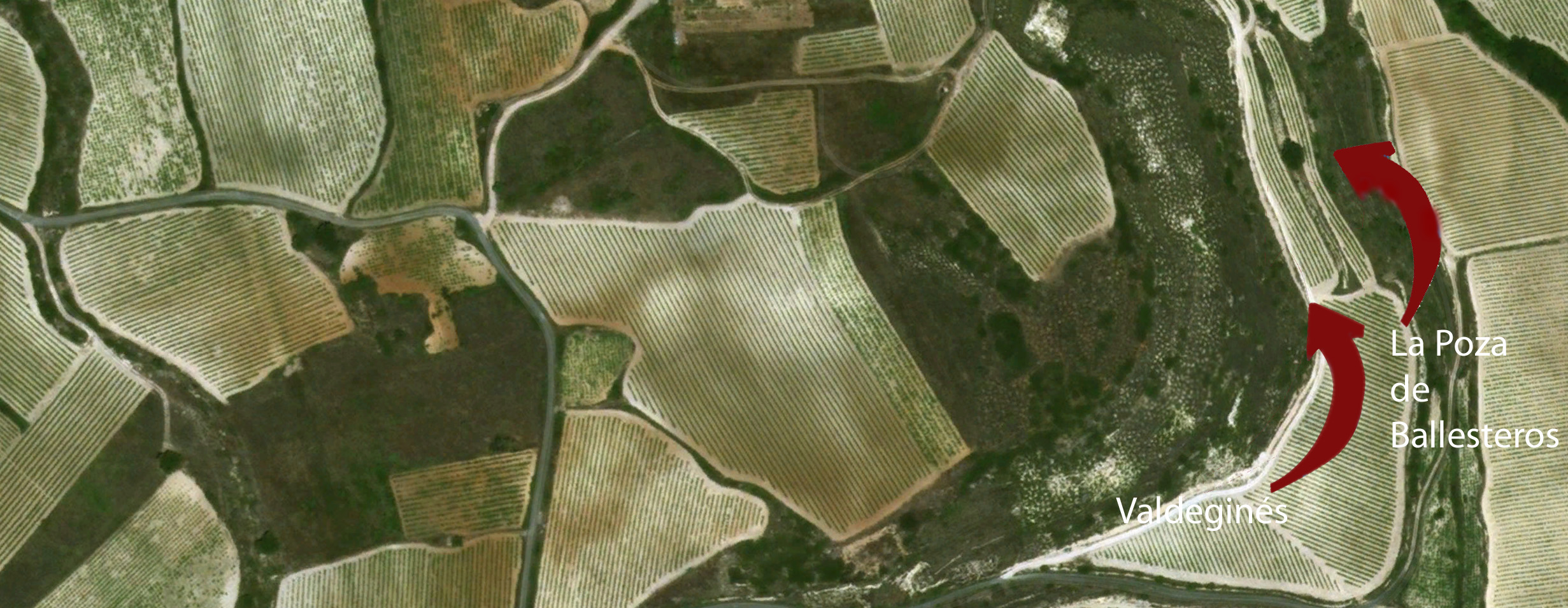The Terroir of Rioja
I recently wrote about the underappreciated art of blending in Burgundy, where the reputation of single-vineyard wines overshadows the quality of wines which are blends of different vineyards or villages.
An example I gave of a region where blending is central to its style and identity is Rioja. In this famous region in northern Spain, wines are often a blend of different grape varieties, vineyards, and sub-regions. This is due to varieties’ different qualities as well as a varied climate. The aim is to create a balanced wine expressive of the region as a whole rather than one single aspect of it.
However, I recently had a tasting with a Rioja producer which turned that perception on its head. In 1985, Juan Carlos López de Lacalle bought and transformed a Rioja co-operative, Artadi, making it one of the most dynamic wineries in the region by moving away from traditional to more modern, international practices.
I met his son, Carlos, who argued passionately that the best - and only - way to express such a large region as Rioja was through village and single-vineyard wines. His and his father’s beliefs are so strongly held that in order to resist the conservatism of Rioja they have removed themselves completely from the regional designation - Rioja now no longer appears on their labels.
Carlos contrasted Spain to France, where there is often a clear pyramid: region - sub-region - village - vineyard. In Spain, the breakdown is simply: region. Rioja is Rioja; local knowledge of superior sites is rarely purposefully expressed through the wines.
Rioja does have some broad regional divisions: Alavesa, which is cooler and wetter; La Rioja Alta, where the climate is a little milder; and La Rioja Baja, which is much warmer and drier. However, Carlos argued that those divisions went nowhere near far enough. Instead, he wants to show how Rioja changes from vineyard to vineyard.
Furthermore, the wines are 100% Tempranillo. Like Burgundy or the northern Rhône, the family want to demonstrate terroir through one single variety. His argument was a powerful and passionate one, though quite individual. He doesn't see Artadi as a typical Rioja producer, although one rooted in Rioja's history and terroir. The answer to whether this is the best way to express Rioja lay, of course, in the wines themselves.
Artadi Viñas de Gain 2015 ($25)
The winery is based in the town of Laguardia, which is halfway between Logroño and Haro in the cooler Alavesa sub-region. Tempranillo dominates here, to the extent that the family don't feel the need to put the variety on the label. This wine comes from about 25 parcels around Laguardia, intended as an overall, general expression of the area - just like a Gevrey-Chambertin village wine. This gave a good impression of what Tempranillo from northerly Rioja tastes like on its own: floral, fruity, and slightly chewy, with a herbal, menthol feel and a balanced, spicy palate. It’s also surprisingly high in alcohol (14.5%), which points to good overall vineyard management in an area where Tempranillo had to be traditionally beefed up with Garnacha from warmer La Rioja Baja. ✪✪✪✪
Artadi Valdeginés 2014 ($63)
Then we moved on to the single-vineyard - or cru - wines for more concentrated and specific expressions of place. Valdeginés is a 5ha vineyard east of Laguardia with east-facing slopes. The wine the vineyard produces is intense and structured, with floral, herbal, menthol aromas as well as crunchy strawberry and raspberry fruits, a spicy, tannic grip, and lively acidity. ✪✪✪✪✪
Artadi La Poza de Ballesteros 2014 ($130)
La Poza de Ballesteros is just 100m east of Valdeginés, but with a west-facing aspect that receives the afternoon sun and means that the vineyard is harvested 7 days earlier than its neighbour. The contrast between these two wines really underlined Carlos's argument that the different natures of Rioja should be expressed through single-vineyard wines. The aspect and ripening conditions result in a fundamentally different wine: bigger, fruitier, and more forward with riper red fruits that are balanced by grainy tannins and a long, textured, structured finish. ✪✪✪✪✪
Artadi El Carretil 2014 ($235)
El Carretil is a 5.5ha vineyard south of Laguardia. Altitude is lower, temperatures are warmer, the aspect is south facing, the soils are chalky, and the berries are smaller. In other words, completely different growing conditions. The result is a wine that’s fresh, fruity, and quite big, with a round mouthfeel and firm, gripping tannins, oaky spice, and a herbal texture. This is an involved, complex wine, though whether it deserves its price tag depends on how you view $200+ wines in general. ✪✪✪✪✪
It was fascinating tasting these wines side by side, highlighting that Rioja isn't solely a region of blending but one with many different site expressions. Artadi are using the history of the region to turn tradition on its head in an attempt to change perceptions of Rioja. The wines are intense, concentrated, and ageworthy: they need some time to open up and become friendlier. Whether you prefer wines that more generously express a region as a whole or wines such as these that powerfully represent a specific site is personal preference. I have to confess that the joy I have always got out of wines from Rioja or, for instance, the southern Rhône has been the overarching balance from careful blending. But these wines definitely show that there are many different ways of expressing Rioja to advertise it as a more vibrant, dynamic, and individual region than is sometimes supposed - even when the region isn’t on the label.




